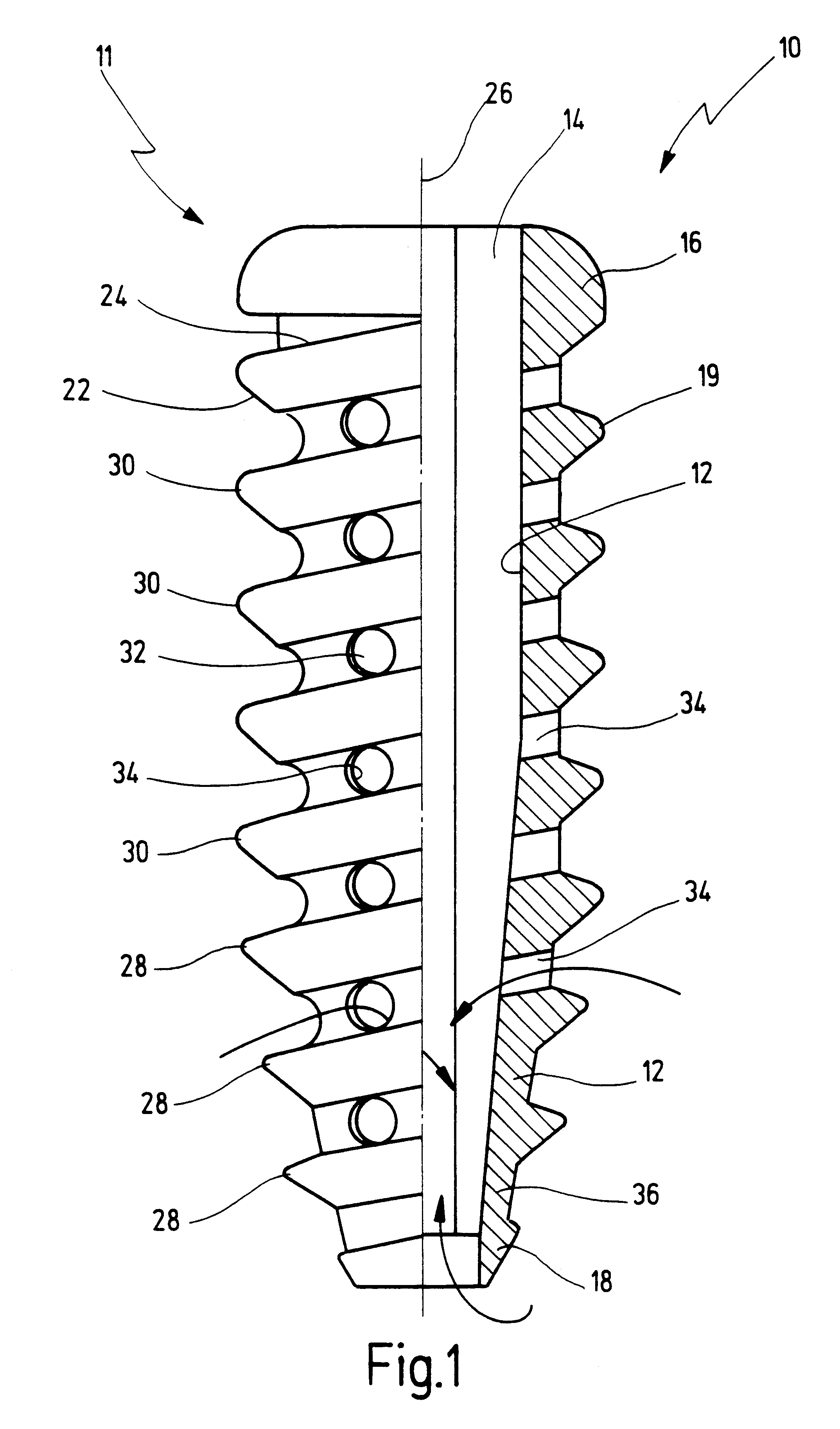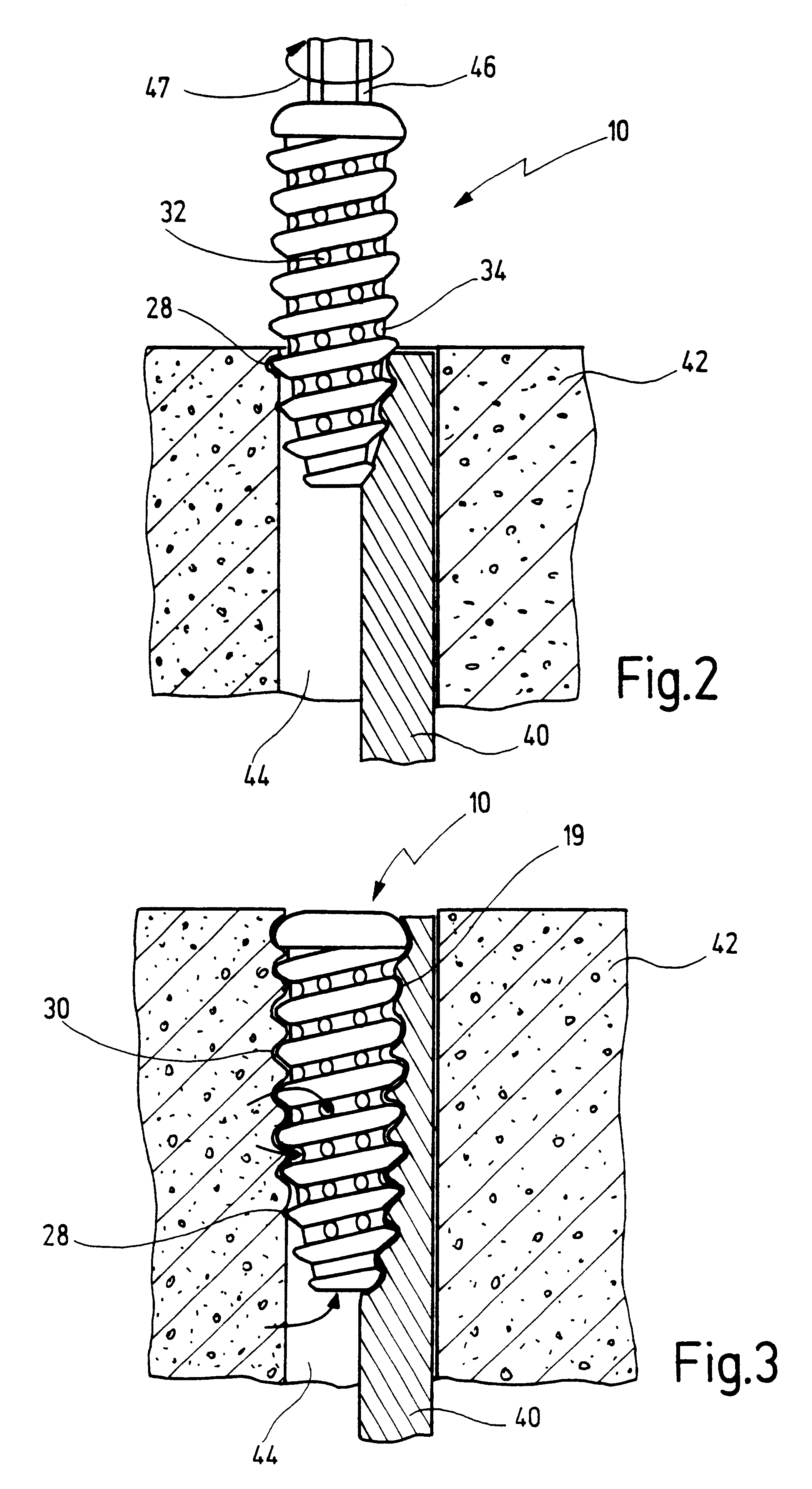Biodegradable fixation element
a technology of fixation element and biodegradable material, which is applied in the field of biodegradable fixation element, can solve the problems of insufficient bone growth or insufficient fixation, and the inability to fix new transplants, and achieve the effects of prolonging the mechanical anchoring of the transplant, simple fabrication, and retaining the stability of the elemen
- Summary
- Abstract
- Description
- Claims
- Application Information
AI Technical Summary
Benefits of technology
Problems solved by technology
Method used
Image
Examples
Embodiment Construction
A fixation element is shown in FIG. 1 and designated generally with the reference numeral 10. The element 10 in the present embodiment is formed as an interference screw 11.
The interference screw 11 comprises a body 12 having a head end 16 and a penetrating end 18. The approximately hollow cylindrical screw body tapers in the region of the penetrating end 18. A channel 14 passes completely through the body from the head 16 to the penetrating end 18, whose cross-section at least in the region of the head 16 has a sexangular contour.
The body 12 is provided with anchoring members 19 in the form of an outer threading 20, which extends from the penetrating end 18 to the head 16. The outer threading 20 in the present embodiment is provided with a profile to be a buttress threading. The forward flanks 22 facing the penetrating end 18 have an angle of about 45 degrees with respect to the center axis 26 of the screw 11. The other flanks 24, seen from the head 16 toward the penetrating end 18...
PUM
| Property | Measurement | Unit |
|---|---|---|
| angle | aaaaa | aaaaa |
| diameter | aaaaa | aaaaa |
| outer diameter | aaaaa | aaaaa |
Abstract
Description
Claims
Application Information
 Login to View More
Login to View More - R&D
- Intellectual Property
- Life Sciences
- Materials
- Tech Scout
- Unparalleled Data Quality
- Higher Quality Content
- 60% Fewer Hallucinations
Browse by: Latest US Patents, China's latest patents, Technical Efficacy Thesaurus, Application Domain, Technology Topic, Popular Technical Reports.
© 2025 PatSnap. All rights reserved.Legal|Privacy policy|Modern Slavery Act Transparency Statement|Sitemap|About US| Contact US: help@patsnap.com



